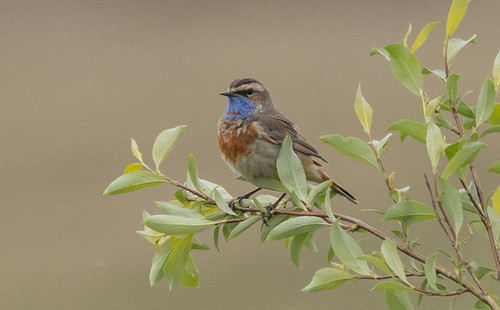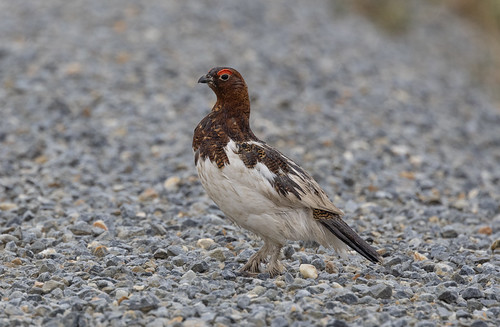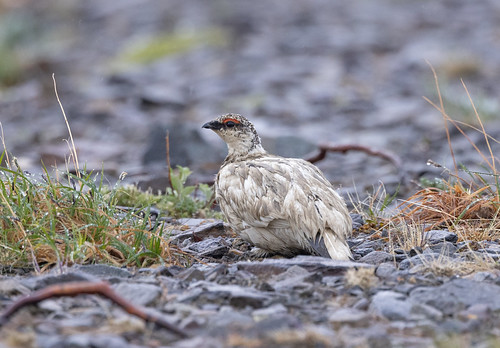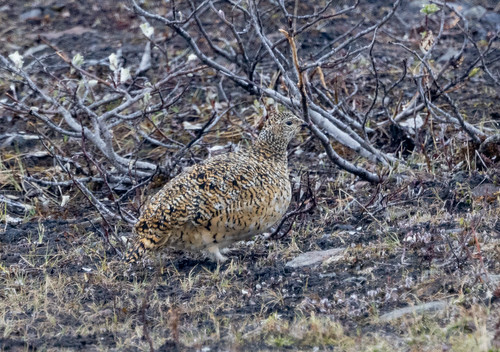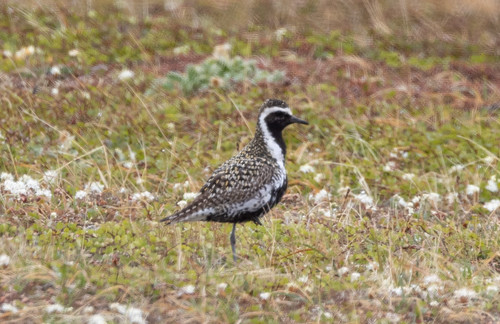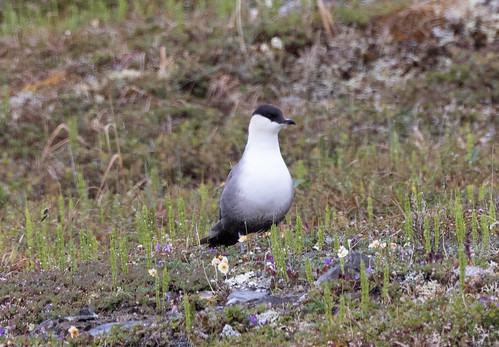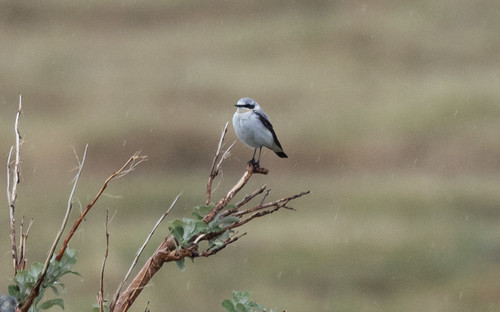Three roads diverged in the city of Nome, and unlike Robert Frost, my Alaska birding group didn’t have to choose between them. We gave each a full day.
The Nome-Teller Road runs 73 miles northwest from Nome to the Inupiat village of Teller. During the Gold Rush, Teller was a boom town with more than 5,000 people; now it’s home to about 250 people, over 90 percent of them Inupiat.
We drove on the Nome-Teller Road twice but didn’t get close to Teller either time. It was the first road we explored in Nome, starting after lunch when we arrived on June 12. That afternoon we just went as far as Mile Marker 15, stopping where our leader knew we had a good chance of finding our first Bluethroat.
This gorgeous relative of the European Robin can be found in North America only in northern Alaska and the Yukon. One of the easiest, most reliable places to find Bluethroats on this continent is along the Teller Road, which comes closer than any North American road to the species’ primary range in Eurasia.
Before we’d found the singing Bluethroat, we’d already seen two other important target species. The dainty, understated Arctic Warbler, like the Bluethroat, is a songbird whose primary breeding range is northern Eurasia.
The iconic musk ox is native to Arctic areas of Northern Canada, Greenland, and Alaska, but the Alaskan population was wiped out in the late 19th or early 20th century, primarily due to hunting. Reintroduction programs are bringing them back to the Alaska landscape.
The next day, June 13, we set out to explore the Teller Road more extensively. Weather conditions were what a pessimist might expect on a June day in northern Alaska: windy with drizzle, sleet, and snow. I was glad we got the Bluethroat the day before because little songbirds were trickier in this, and at many stops we all stayed in the van, observing, and photographing, birds through the van windows. That's why many of my photos are a bit fuzzy.
We got a few opportunities to enjoy Alaska’s state bird, the Willow Ptarmigan.
My students back in the 1970s named the Willow Ptarmigan the winner of their contest to find “the weirdest bird call in the universe.” Unfortunately, our group on the Teller Road merely saw these ptarmigans—it was too windy to hear them even if they had been calling.
We also saw such wondrous creatures as a Gyrfalcon and Whimbrels, too far for photos.
Around Mile 34, near an isolated mountain dome high enough to create its own weather, where the rocky ground and sparse tundra vegetation provide ideal habitat for Rock Ptarmigan, we encountered them both coming and going, including a female returning to her nest.
We also saw a displaying Red Knot, breeding Pacific Golden-Plovers...
...a host of Long-tailed Jaegers...
... and one or two Northern Wheatears. I’ve seen this bird only once before, in Duluth of all places. Even though these Teller Road birds were quite far away, I was thrilled to finally get pictures.
At about Mile 40, we took a side road to Woolley Lagoon. This little side road is owned by the King Island Native Corporation and runs from the Teller Road to the King Island people's traditional fishing camps at Woolley Lagoon. Although this is a public right-of-way road in summer, the land is private, belonging to the Native King Islanders, and visitors are asked to stay near the road. We saw breeding Dunlins, more Pacific Golden-Plovers, and a male Black-bellied Plover doing his broken-wing display.
As unpleasant as the weather was most of the day, we didn’t have to deal with heavy precipitation—either in rain or snow form—or freezing temperatures. Highs had been in the low 40s here in Duluth most of May, so the drizzly 40-ish conditions felt rather homey to me. Some people stayed in the van for our lunch of Subway sandwiches, but Russ and I enjoyed ours out on the tundra.
Where we turned around to head back toward Nome was and will almost certainly remain the farthest west I’ve ever been in North America. I’d had a wonderful time, and there were still two more roads stretching out before me.


